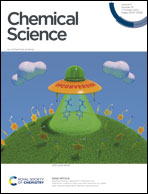Quantum-confined superfluid reactions
Abstract
A helium atom superfluid was originally discovered by Kapitsa and Allen. Biological channels in such a fluid allow ultrafast molecule and ion transport, defined as a quantum-confined superfluid (QSF). In the process of enzymatic biosynthesis, unique performances can be achieved with high flux, 100% selectivity and low reaction activation energy at room temperature, under atmospheric pressure in an aqueous environment. Such reactions are considered as QSF reactions. In this perspective, we introduce the concept of QSF reactions in artificial systems. Through designing the channel size at the van der Waals equilibrium distance (r0) for molecules or the Debye length (λD) for ions, and arranging the reactants orderly in the channel to satisfy symmetry-matching principles, QSF reactions in artificial systems can be realized with high flux, 100% selectivity and low reaction activation energy. Several types of QSF-like molecular reactions are summarized, including quantum-confined polymerizations, quasi-superfluid-based reactions and superfluid-based molecular reactions, followed by the discussion of QSF ion redox reactions. We envision in the future that chemical engineering, based on multi-step QSF reactions, and a tubular reactor with continuous nanochannel membranes taking advantage of high flux, high selectivity and low energy consumption, will replace the traditional tower reactor, and bring revolutionary technology to both chemistry and chemical engineering.

- This article is part of the themed collection: Editor’s Choice – Jinlong Gong


 Please wait while we load your content...
Please wait while we load your content...